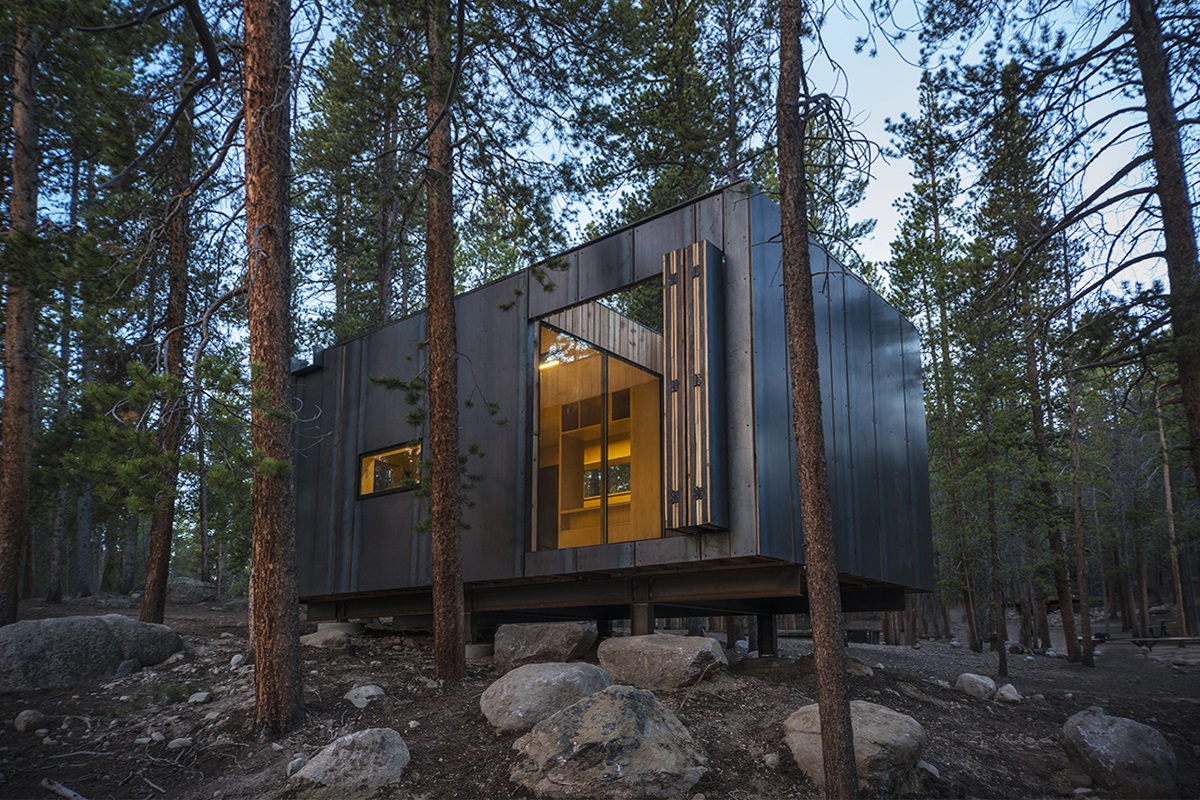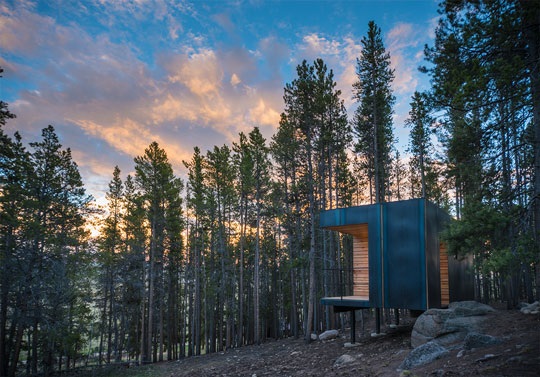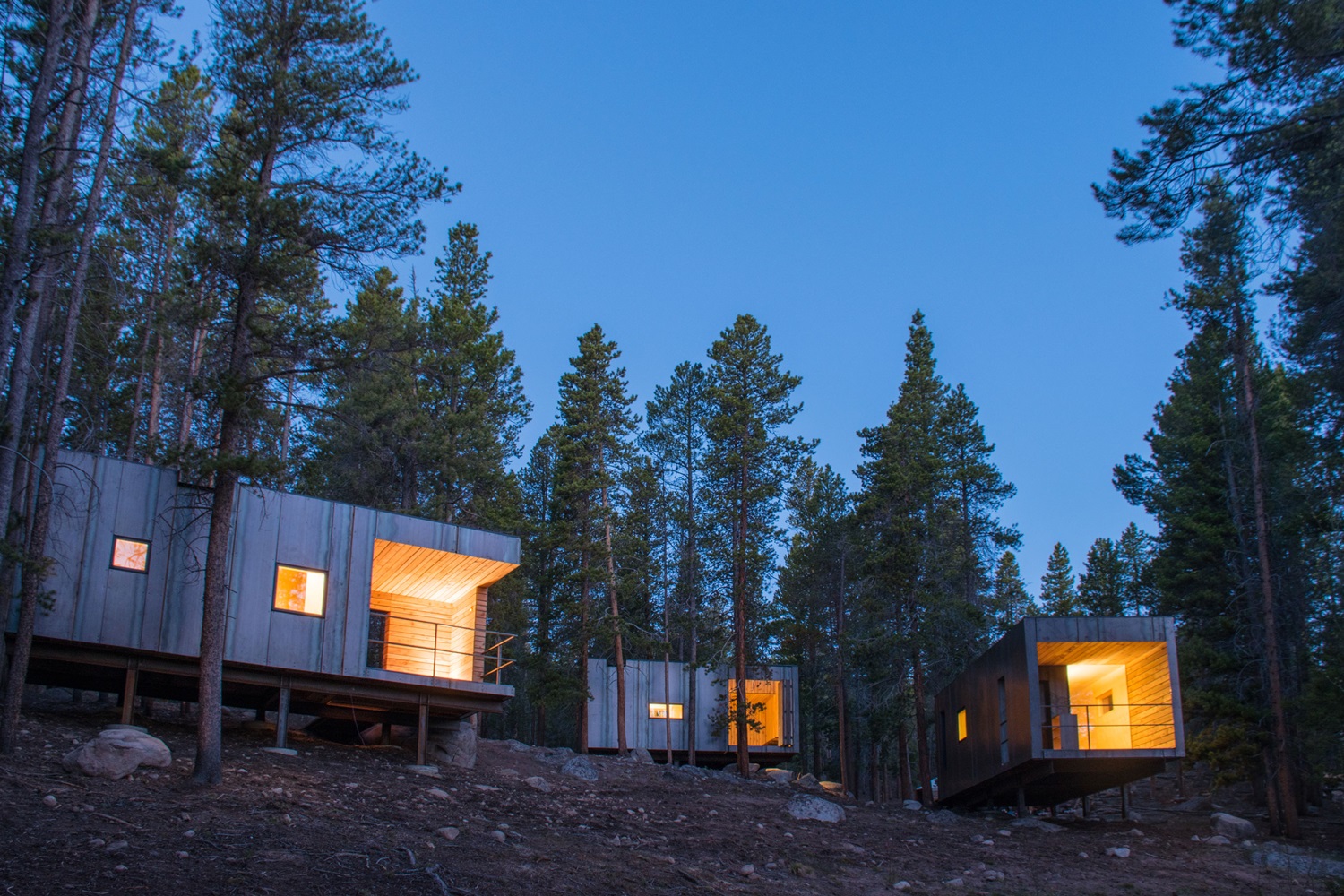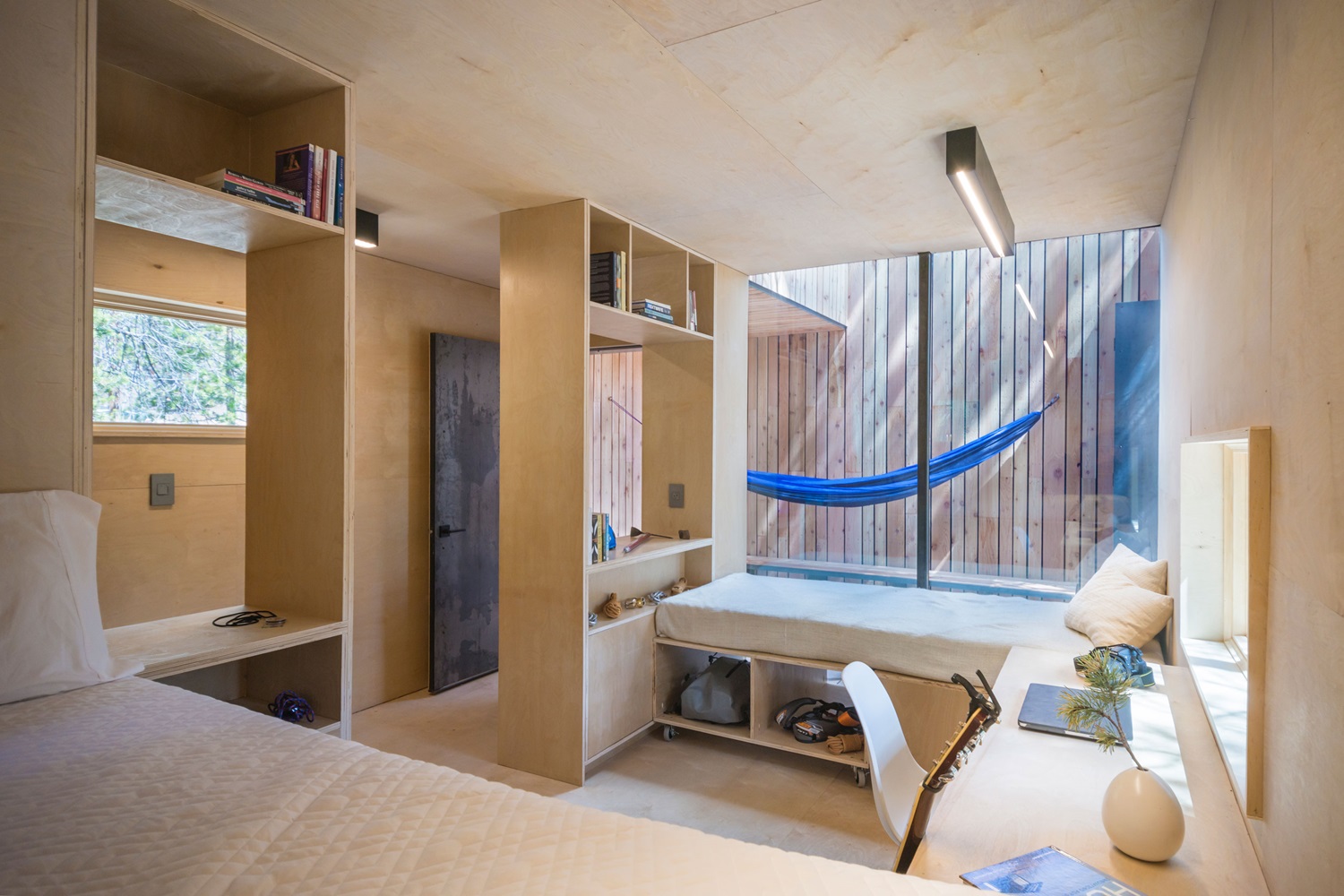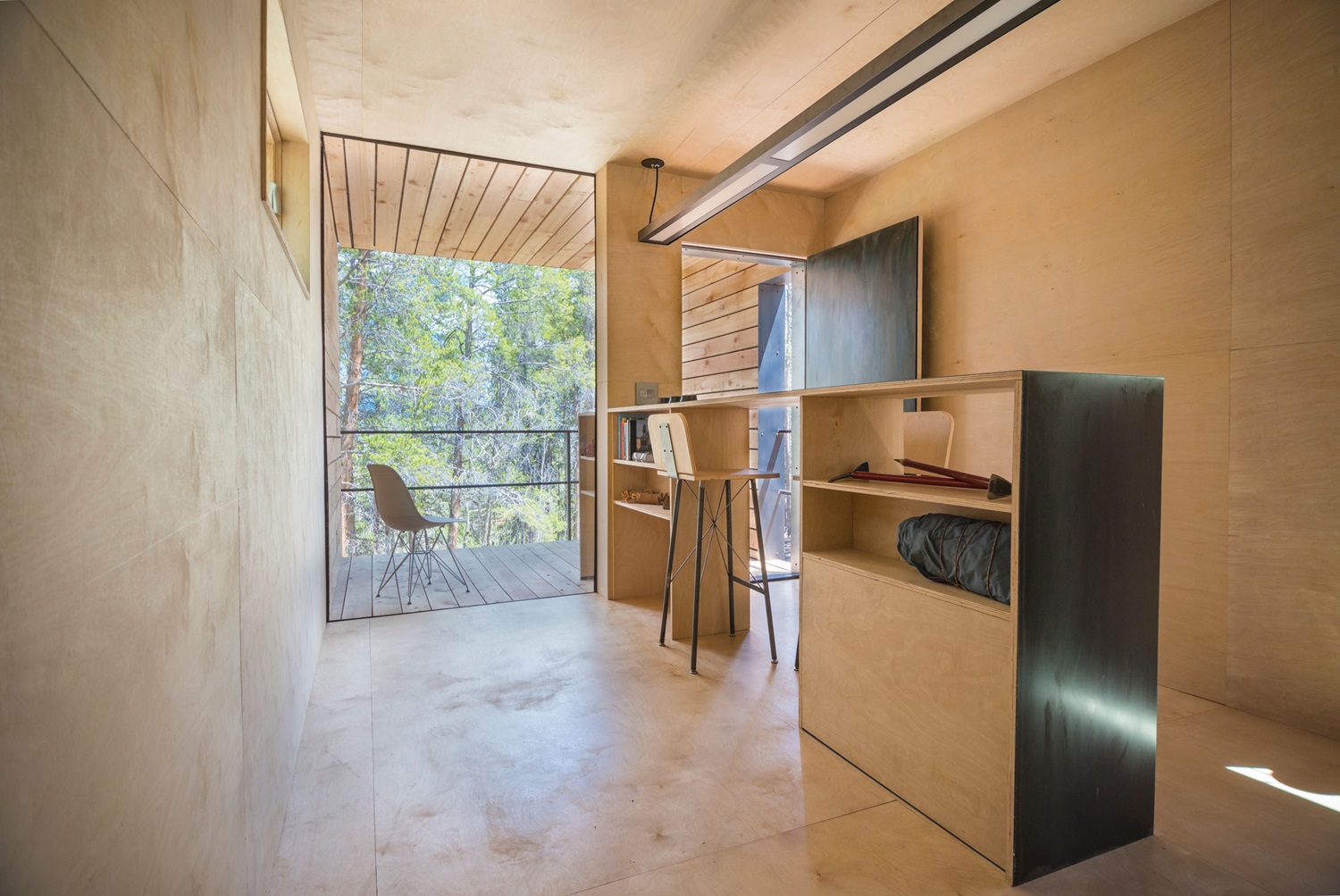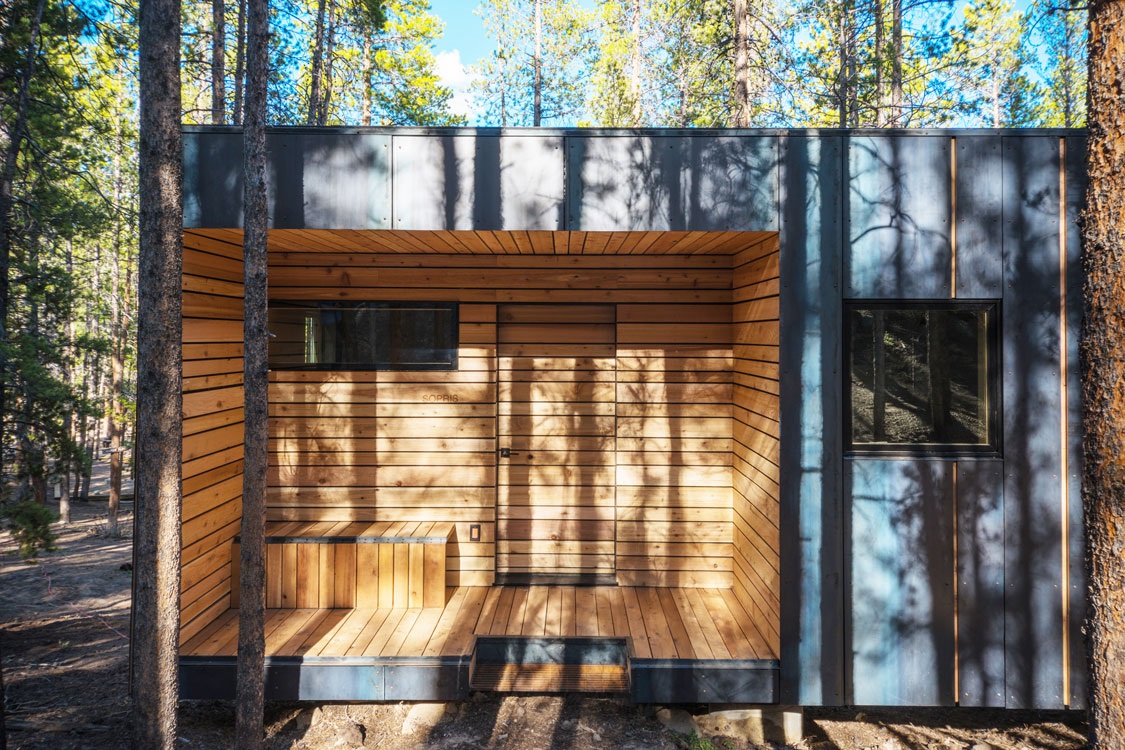COLORADO OUTWARD BOUND SCHOOL YEAR-ROUND MICRO CABINS | 2016
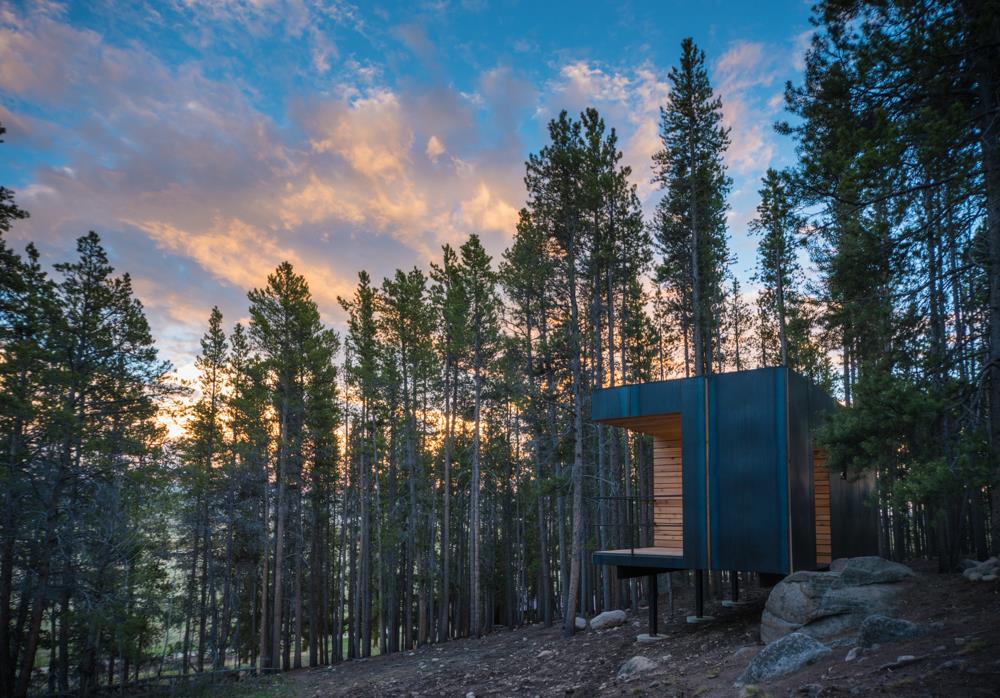
In 2016 the Colorado Outward Bound School (COBS), a not-for-profit organization focusing on outdoor education, continued its partnership with the University of Colorado Denver’s ColoradoBuildingWorkshop. This second group of 28 students designed and built seven insulated cabins for year-round use. The cabins were intertwined within the same village housing boundaries as the 14 seasonal cabins constructed in 2015; deep within a lodgepole pine forest, 10,000 feet above sea level, and accessible only by a narrow dirt road.
Students were required to conduct a critical architectural inquiry into materiality, structure, light, context, environment, and program to create innovative solutions to prefabricated, accelerated-build, micro-housing. Each 200 square foot cabin was required to house one or two residences and be powered by a single electrical circuit. The circuit provides lighting, heating, and a series of receptacles with the capacity to charge technology and small appliances (mini-refrigerators, teakettles, coffee pots, etc). A central staff lodge is accessible to the residences for bathing, cooking, and laundry.
With an average annual temperature of 35o Fahrenheit the seven all-season structures were required to meet the standards of the International Energy Conservation Code climate zone 7&8 (the coldest zone in the United States). Inspired by quinzees, a snow shelter made from a hollowed-out pile of snow, the students adapted the logic of “snow insulation” for their structures. The cabins employ structurally insulated panels (SIPs) for the walls and flat roofs. The roofs are designed to hold the snow in the winter, providing an additional R-20 to R-30 of insulation depending on the depth of the snow. A single electrical circuit powers each structure. This is accomplished by the small cabin footprints, LED lighting, and the super insulation of the SIPs combined with the snow’s natural insulation. This efficiency reflects the school’s commitment to the environment.
The orientation and articulation of each of the seven cabins react individually to the immediate site conditions present in the landscape. No two cabins are alike. Hot rolled steel cladding provides a low maintenance rain screen for the structure. The cladding and the vertical columns of the moment frame below blend with the pine forest, minimizing the visual impact. Cedar clad front and back porches are carved from the main mass to create an entry and private outdoor spaces for the more introverted, permanent COBS staff. The cabin interiors are skinned in birch plywood bringing warmth to the structure and a connection with the trees surrounding the site.
2017 AIA National Small Projects Award
2016 Residential Architect Design Awards (RADA)
2016 American Architecture Prize, Student Architecture
2016 American Architecture Prize, Gold-Small Architecture Prize, Silver- Social Housing
2016 WAN Metal in Architecture Award, Shortlisted
2016 Jury Winner Architizer A+ Awards, Typology Categories Residential: Private House (xs)
2015-2016 ACSA Design Build Award
2015 Architizer A+ Awards, Finalist, Typology Categories Residential: Private House (xs)
2015 AIA Colorado Honor Award
2015 AIA Colorado Citation Award
2015 Architizer A+ Awards, Special Mention, Typology Categories Residential: Private House (xs)
Joshua Allen
Andrew Baur
Devyn Bernal
Michael Black
Leigh Bryant
Craig Dunn
Amanda Gonzales
Anna Griffith
Jeffrey Heger
Jim Hillard
Kyle Hoehnen
Andrea Kelchlin
Jesse Ledin
Amie McDermott
Tanner Morrow
Nina Najmabadi
Kyle Plantico
Christopher Powell
Genevieve Rogers
Mike Schauble
Andrew Schrag
Diana Souders
Henry Spiegel
Samantha Strang
Catrina Weissbeck
Tyler Whaley
Brittany Wheeler
Ryan Wresch
Andrew Baur
Devyn Bernal
Michael Black
Leigh Bryant
Craig Dunn
Amanda Gonzales
Anna Griffith
Jeffrey Heger
Jim Hillard
Kyle Hoehnen
Andrea Kelchlin
Jesse Ledin
Amie McDermott
Tanner Morrow
Nina Najmabadi
Kyle Plantico
Christopher Powell
Genevieve Rogers
Mike Schauble
Andrew Schrag
Diana Souders
Henry Spiegel
Samantha Strang
Catrina Weissbeck
Tyler Whaley
Brittany Wheeler
Ryan Wresch
Airgas
Big Sky Insulation
CAD-1
DuPont Tyvek
Firestone
Glass Systems
Kiewit
KW Construction and Restoration
Living Design Studio
LeGrand
Marx | Okubo
The MH Companies
Oldcastle Building Envelope
Pinnacle Architectural Lighting
Simpson Strong Tie
Wagner CAT
Big Sky Insulation
CAD-1
DuPont Tyvek
Firestone
Glass Systems
Kiewit
KW Construction and Restoration
Living Design Studio
LeGrand
Marx | Okubo
The MH Companies
Oldcastle Building Envelope
Pinnacle Architectural Lighting
Simpson Strong Tie
Wagner CAT
